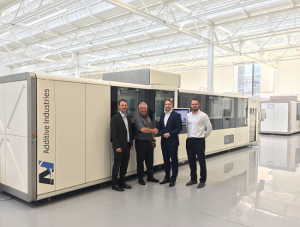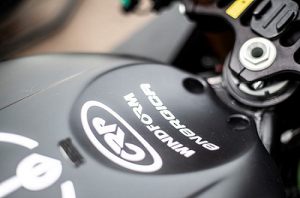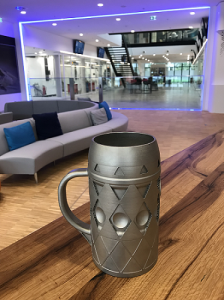Additive manufacturing is evolving very quickly, powering the development of innovative, lightweight applications.
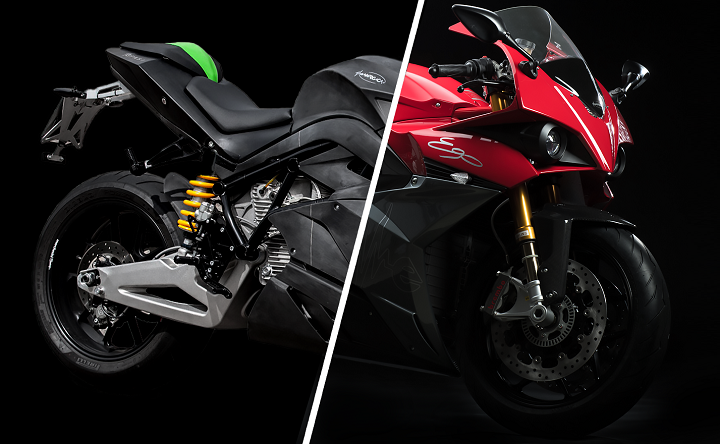
Energica Ego running prototype with several 3D printed parts in Windform® composite materials (starting point) and Energica Ego electric motorcycle homologated for street use (present day)
This growth has a major reason: advances in additive materials. According to many 2019 reports, the number of materials available for AM has more than doubled in the past five years, and the rules of manufacturing have been rewritten as the technical capabilities of these polymers met up with the opportunities that 3D printing offers in term of product development and low-volume parts production. Materials for professional 3D printing are completely changing traditional production schemes.
Amongst the most known and long-running high performance materials on market, there are Windform® TOP LINE range of Carbon or Glass fiber reinforced composite materials created by Italy-based CRP Technology.
Windform® TOP LINE composite materials are for selective laser sintering (SLS), an additive manufacturing technique that uses a laser as the power source to sinter powdered material from a 3D model.
Windform® TOP LINE are designed to offer full range of options, possibilities and features, from excellent thermal properties to resistance to high temperature, from high stiffness and excellent strength to reduced weight, just to name a few.
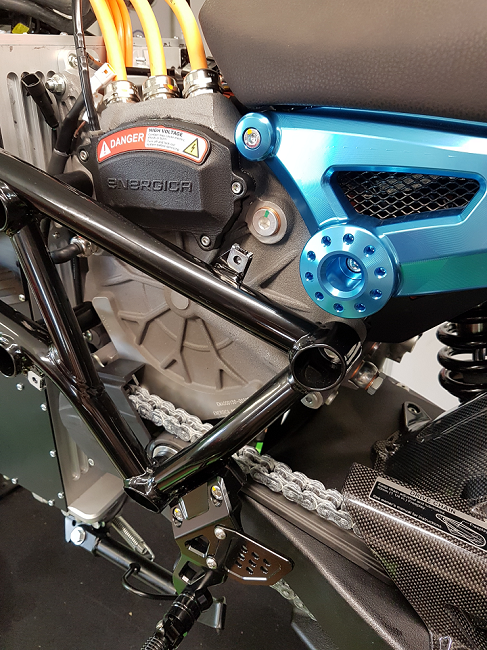
Eva EsseEsse9 3D printed terminal cover in Glass-fiber filled composite material Windform® LX 3.0 and 3D printed chain slider in Glass-fiber filled composite material Windform® GT
Examples concerning the wide range of uses of high performance composite materials and professional 3D printing, comes from Energica Motor Company, first Italian manufacturer of super-sport electric motorcycles and single manufacturer for FIM Enel MotoE World Cup.
World Cup.
Long-term technological partnership with CRP Technology enabled Energica to be on the market quickly, fueling innovation, accelerating the prototyping and product development phase.
All Energica motorcycles models currently on the market were created and engineered through the support of CRP Technology: its innovative and avant-garde solutions in the field of additive manufacturing technology have made Energica a unique model throughout the world.
“We relied on CRP Technology and their 3D printing department as they have the right composite material to meet every demand, especially for a project as complex as Energica electric motorcycles. I’m not referring to an ordinary motorcycle, but a high-voltage, high power electric motorcycle that has special needs. CRP Technology proved to be the right partner to support customers in their challenge,” explains Energica Motor Company CTO, Giampiero Testoni.
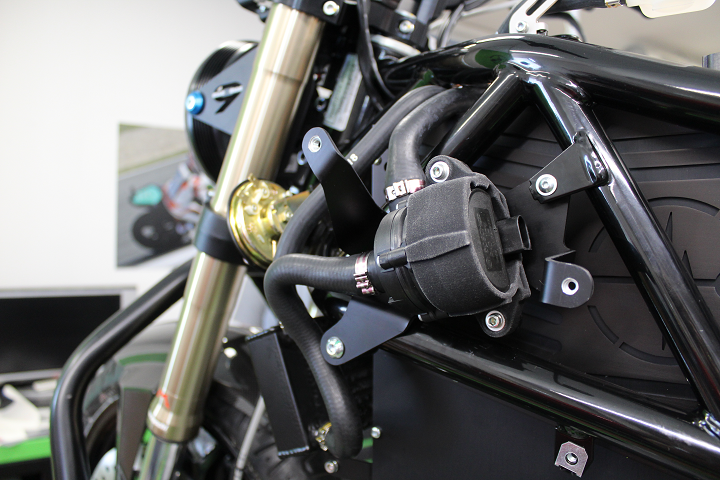
Eva EsseEsse9 3D printed water pump support realized in Windform® RL thermoplastic elastomer material for 3D printing
From the R&D and testing phases to pre-series, Energica motorcycles have been mounting many functional components 3D printed by CRP Technology.
Let’s consider the first model ever, Energica Ego which is “the most powerful and sophisticated electric motorcycle homologated for street use anywhere in the world” (from Energica website).
In the first prototype phase, several components of Energica Ego motorcycle such as aerodynamic parts, fairings, front and rear fenders, tail, were made by CRP Technology via professional 3D printing using Windform® XT 2.0 Carbon-fiber filled composite material from CRP Technology’s TOP-LINE range of high performance materials.
Dashboard support, rear mirrors and front fairing were made in Windform® SP Carbon fiber filled composite material.
Windform® TOP-LINE are production-grade materials. Their use is not limited to the prototype phase, but also short production runs. Let’s see some examples: Windform® XT 2.0 is nowadays used to produce the frontlight cover on the Energica Ego motorcycles currently on the market.

Eva EsseEsse9 3D printed terminal cover and 3D printed sprocket cover both in Glass-fiber filled composite material Windform® LX 3.0
This component isn’t the only one that CRP Technology is manufacturing for the Energica motorcycles that get to the world market: CRP Technology produces the electric motor terminal cover (for Energica Ego, Energica Eva EsseEsse9 motorcycles), turn signal indicators, sprocket cover (both for Energica Ego, Energica Eva EsseEsse9). These components are manufactured via selective laser sintering using Windform® LX 3.0 Glass-fiber filled composite TOP-LINE material.
The chain slider (for both Energica Ego, Energica Eva EsseEsse9) is manufactured by CRP Technology using the other Glass-fiber filled composite material from the TOP-LINE family: Windform® GT.
The water pump-support (for Energica Ego, Energica Eva EsseEsse9 motorcycles) is manufactured by CRP Technology in Windform® RL thermoplastic elastomer material for SLS.
CRP Technology partnered with Energica even on the development and construction of Ego Corsa, Energica’s electric racebike for the FIM Enel MotoE World Cup which is derived from the street-legal motorcycle Energica Ego.
World Cup which is derived from the street-legal motorcycle Energica Ego.
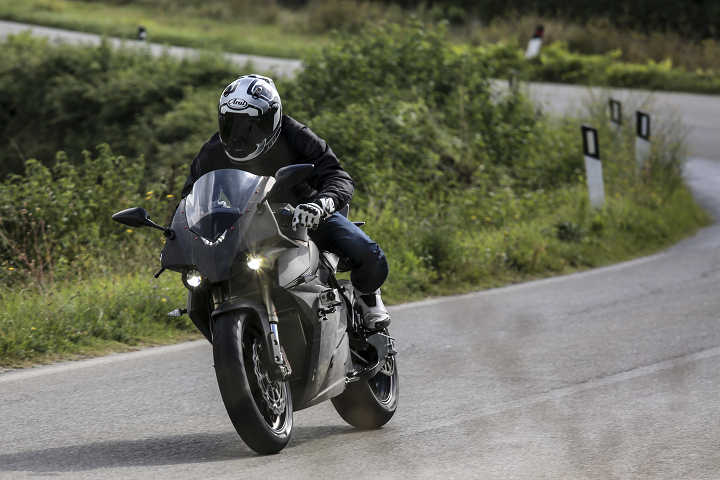
Energica Ego running prototype drives on the road: 3D printed dashboard support, rear mirrors, front fairings manufactured in Carbon fiber filled composite material Windform® SP
A first preview: Some recent components inside the Ego Corsa’s new battery are 3D printed using Windform® FR2, the newest and disruptive material from the Windform® TOP-LINE range. It is the first composite material for 3D printing which is Glass fiber-filled and flame retardant, FAR 25.853 and UL94 HB compliant.
The massive use of high quality 3D printing allows to fine tune the style (e.g. fairing) and, at the same time, allows to carry out specific test rides on the road.
This prerogative is not limited to the Automotive and Motorsports industry, as it is viable in all advanced sectors.
Learn more in CRP Technology’s white paper, available for download here.
The post From design to reality: Windform® Composite Materials to go beyond 3D Printing appeared first on 3DPrint.com | The Voice of 3D Printing / Additive Manufacturing.

